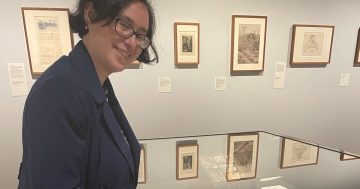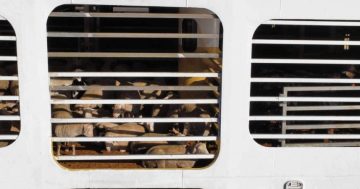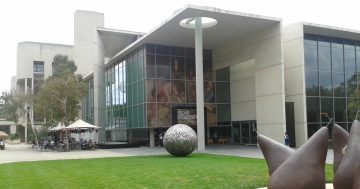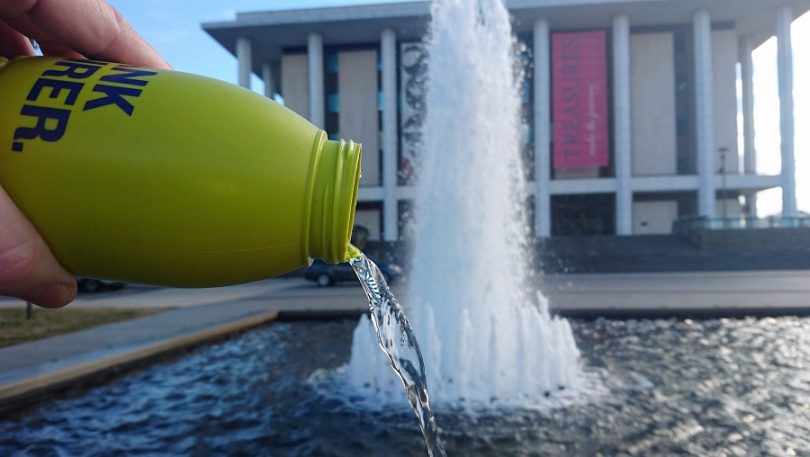
Water confusion – My spirits were slightly dampened when I was told to remove my plastic water bottle from the National Library to protect its priceless collections. Photo: Brad Watts.
I was slightly confused when a security guard asked me to remove my plastic water bottle from the National Library of Australia (NLA) recently.
Sitting quietly at a desk – surrounded by many other people who had similar water bottles – I was doing some work-related research on my laptop in the Main Reading Room when the guard approached me.
“Excuse me sir, but you must remove your water bottle immediately,” said the uniformed man in a stern voice.
Slightly taken aback, I politely inquired about why I had to get rid of my plastic sports bottle, which only contained regular Canberra tap water?
“It’s not see through and it must be removed, that’s our policy,” he said with his arms folded.
Unsure of exactly why I had been singled-out and but not wanting to cause a scene in the serene surroundings, I complied with his request and nonchalantly left the reading area.
However as my spirits were slightly dampened, I decided to investigate further and spoke with another security guard near the main entrance.
I mentioned that I had not received any information from his colleague and was unclear about the NLA’s liquids policy.
“I guess someone should have directed you to the signs,” he said, pointing downstairs to the basement area of the Library.
Sure enough, I discovered some small signs about conditions of entry near public lockers, saying food and drinks must be stored in a locker but “transparent water bottles were permitted”.
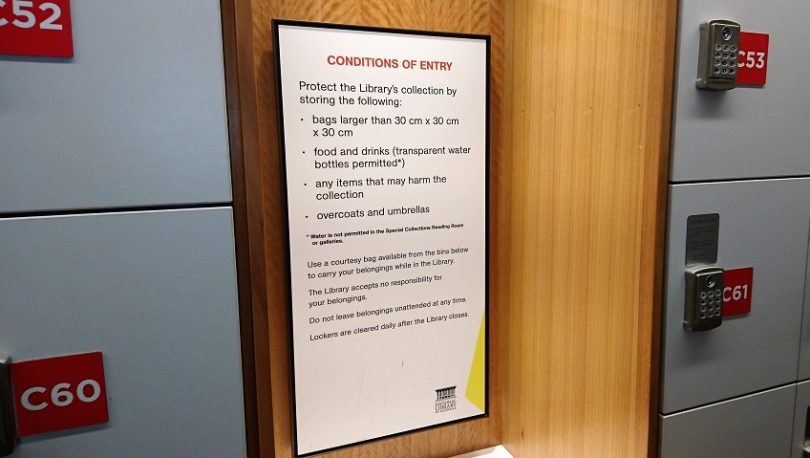
The NLA’s signs about conditions of entry say food and drinks must stored but “transparent water bottles” are okay. Photo: Brad Watts.
This was now making more sense. The basement signs said Library patrons should also use a clear “courtesy bag … to carry your belongings while in the Library.” This rule was designed to protect theft from the historic cultural institution.
On further investigation later that day, I found the Library’s Code of Conduct online, which says: “Pure water in transparent bottles with a tight lid may be brought into the Main Reading Room and the Asian Collections Reading Room only. Water bottles are not to be used or handled in a way that could potentially damage collection material.”
This made me think about how Canberra’s leading national cultural institutions – which are major tourist destinations – communicate their safety and entry policies with locals and visitors, including for bags, food, drinks and personal belongings.
There may be an opportunity to better educate staff and security guards to be more specific and friendlier when enforcing the rules.
As a suggestion, institutions could maybe provide fact sheets to visitors when they arrive or have clearly visible signage in the main entrance areas and foyers.
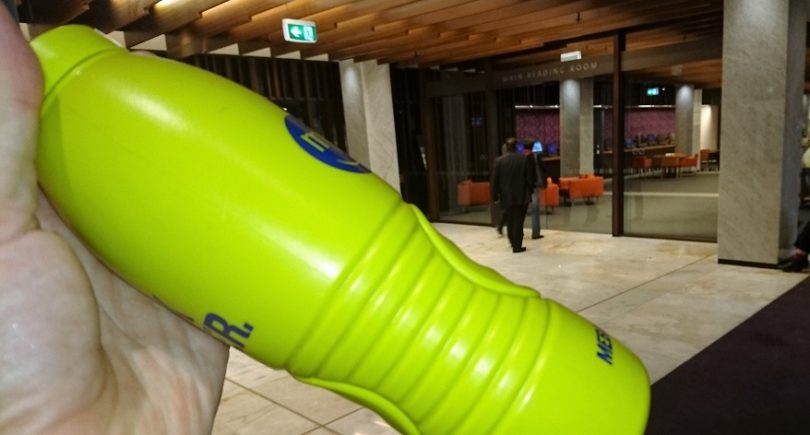
Clearer and more prominent signage could be used to highlight entry policies for institutions, including in the NLA’s Main Reading Room. Photo: Brad Watts.
While I understand the need for the NLA – which is one of Canberra’s grandest landmarks – to have strict rules for liquids not be splashed on its historic collections, there may be an opportunity for greater “transparency” with its policies and better signage. Having larger and more prominent signs throughout the Library would certainly help with this issue, which I am sure would also benefit people who are vision-impaired.
If these changes were made, I will certainly drink to that … with my new transparent water bottle!
Do you think entry and security policies could be better communicated to people by Canberra’s cultural institutions?













